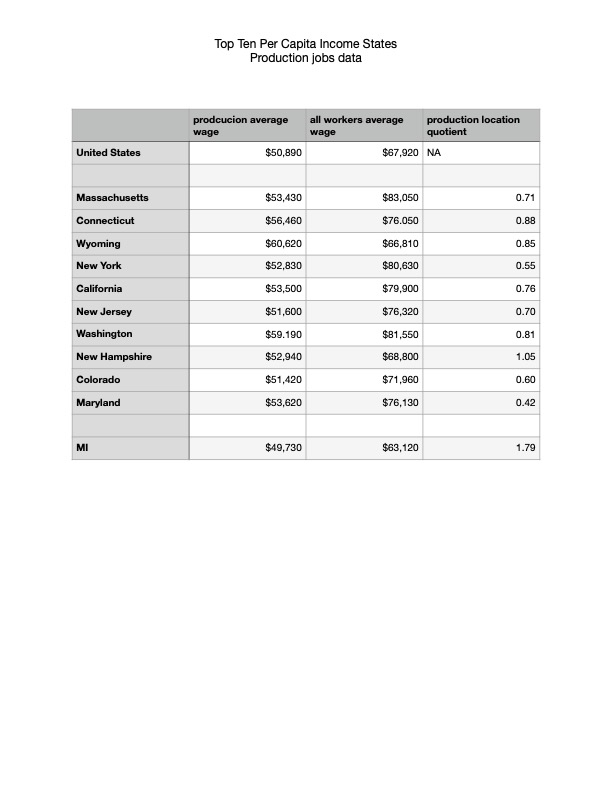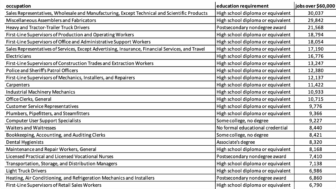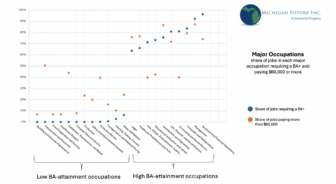
Blue collar manufacturing jobs––officially called production jobs––are no longer high paid. In 2024 Michigan had 445,000 production jobs out of 4.39 million payroll jobs. A little more than 10 percent of all Michigan payroll jobs. The median wage for a full time, year round Michigan production job was $45,470 compared to $48,300 for all Michigan workers. The average wage for a full time, year round Michigan production job was $49,730 compared to $63,120 for all Michigan workers.
Given that Michigan’s core economic challenge is that we don’t have enough high paid jobs, the average wage deficit of more than 20 percent is more impactful/important than the median wage deficit of about 6 percent. Both belie the notion that production jobs are good paying jobs that policymakers in both parties routinely claim.
Turns out the Michigan production workers now earn less than production workers nationally. Something that was unimaginable in the past. The national median for production workers is $45,960. The national average is $50,900. Production workers are a little less than 6 percent of all national workers.
At the bottom of this post is a table with 2024 data for the nation, Michigan and the top ten per capita income states. (The Colorado data is from 2023 because the 2024 data is not available.) The table has average wages for production jobs and for all jobs. And the production jobs location quotient (LQ). LQ measures how concentrated in an occupation a state is compared to the nation. If you have the same portion of production jobs as the nation your LQ is 1. Under 1 means you are less concentrated.
As you can see lots of high wage production jobs have nothing to do with a state being prosperous. The nation’s most prosperous states are under concentrated in production jobs and in each state their average wage of production jobs is lower than the average wage of all jobs, in most of the states substantially below.
Although Michigan has succeeded in being over concentrated in blue collar manufacturing jobs, production jobs are no longer a big share of Michigan jobs. And more importantly are not a major source of high paid jobs. And the same is true for all prosperous states. Blue collar manufacturing jobs were what made Michigan one of the nation’s most prosperous states in the 20th Century. In the 21st Century lots of production jobs are no longer a path to prosperity.
Michigan is having a hard time learning that lesson. Retaining and attracting production jobs is the core of Michigan’s economic development strategy for both parties. At a cost of literally billions of dollars. The state has been pursuing a retain and attract manufacturing plants first economic development strategy for decades and over that time we have fallen from the 16th most prosperous state in the nation to the 12th poorest state. Sure seems like it is far past time for a new economic development strategy.








